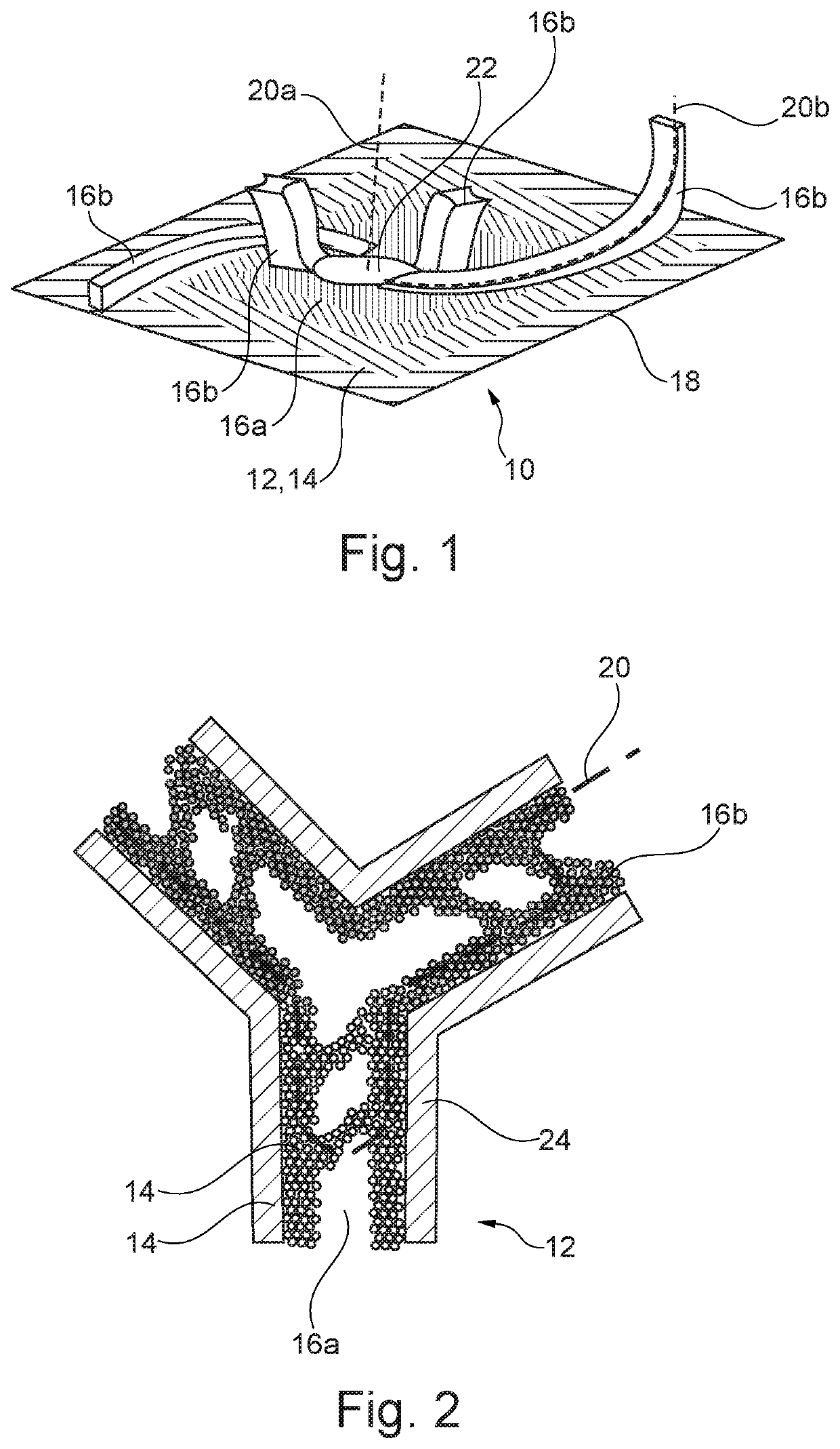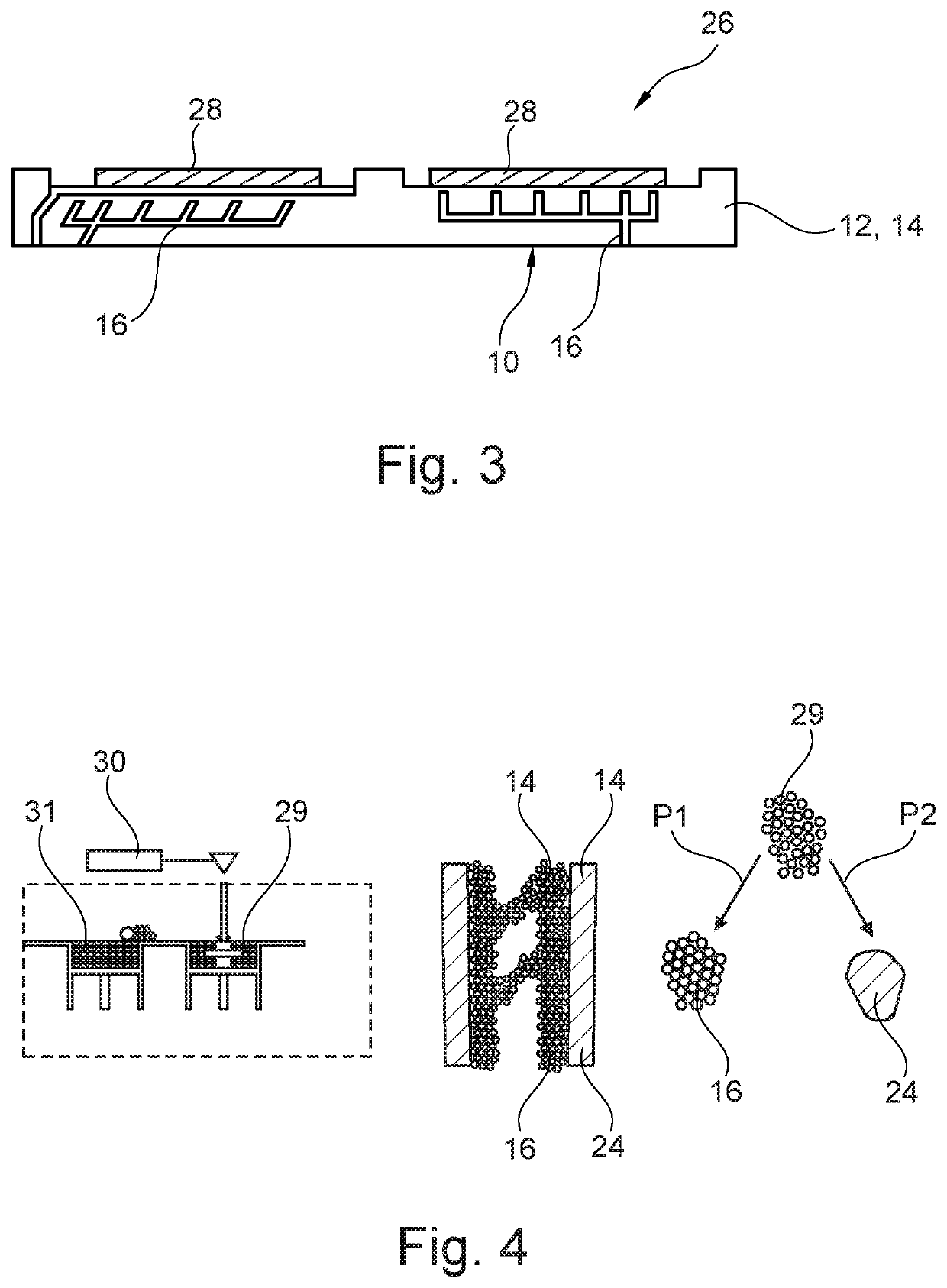Two-phase heat transfer device for heat dissipation
a heat transfer device and two-phase technology, applied in the direction of indirect heat exchangers, electrical equipment construction details, lighting and heating apparatus, etc., can solve the problems that conventional heat transfer devices such as heat sinks, heat pipes, and vapor chambers may not meet the requirements of freedom of design, thermal resistance and dissipation heat flux, etc., to achieve enhanced heat dissipation efficiency, increase the heat dissipation of two-phase heat transfer devices, and facilitate production
- Summary
- Abstract
- Description
- Claims
- Application Information
AI Technical Summary
Benefits of technology
Problems solved by technology
Method used
Image
Examples
Embodiment Construction
[0051]FIG. 1 shows show a schematic perspective view of a of a two-phase heat transfer device 10 according to a first embodiment of the invention.
[0052]As can be seen in FIG. 1 the two-phase heat transfer device 10 comprises a main body 12, which is formed from a body material 14. In this embodiment the body material 14 comprises pure copper, bronze, brass, CuCrZr, CuNiSi(Cr), 1xxx / 2xxx / 6xxx series aluminum, AlSi7Mg, AlSi10Mg, AlSi12, Scalmalloy, Al6061, Al—Cu, pure titanium, Ti6Al4V, steel 316L, steel 17-4PH, Inconel 618, Inconel 725 and / or maraging steel. As can easily be seen in FIG. 1, the main body 12 comprises a multi-dimensional void network 16, in this embodiment a three-dimensional void network. The multi-dimensional void network 16 is formed by holes, pores and / or pipes in short voids in the main body 12. Within the multi-dimensional void network 16 the main body 12 is free of the body material 14. The body material 14 of the main body 12 has a porous structure for forming...
PUM
 Login to View More
Login to View More Abstract
Description
Claims
Application Information
 Login to View More
Login to View More - R&D
- Intellectual Property
- Life Sciences
- Materials
- Tech Scout
- Unparalleled Data Quality
- Higher Quality Content
- 60% Fewer Hallucinations
Browse by: Latest US Patents, China's latest patents, Technical Efficacy Thesaurus, Application Domain, Technology Topic, Popular Technical Reports.
© 2025 PatSnap. All rights reserved.Legal|Privacy policy|Modern Slavery Act Transparency Statement|Sitemap|About US| Contact US: help@patsnap.com


